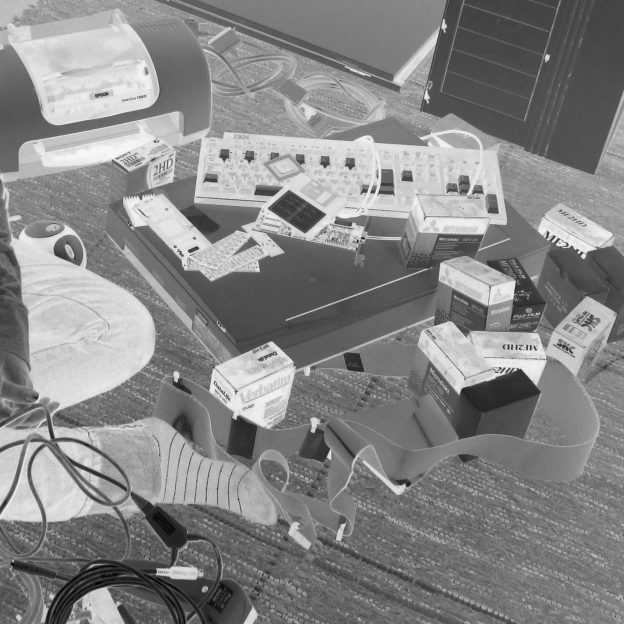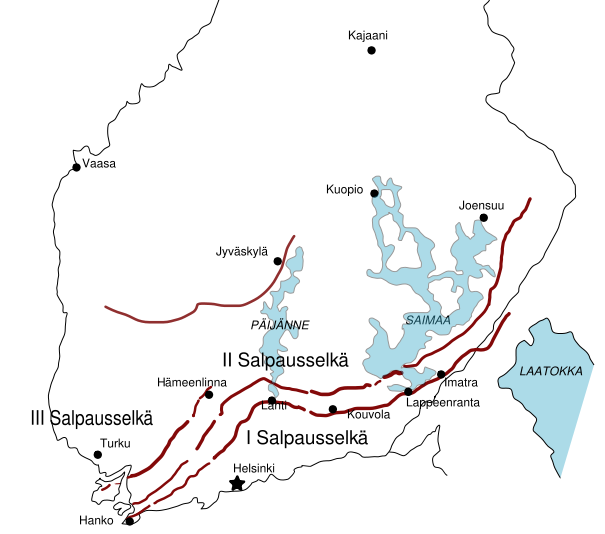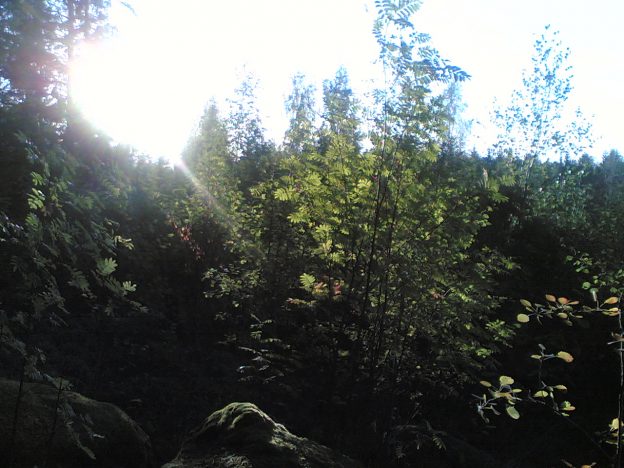Over the course of last summer I read one of the most popular science fiction novels: Dune by Frank Herbert. Written in 1965, it has inspired a plethora of other space operas, including Star Wars, a personal childhood favorite. Dune is a quintessential sci-fi novel, and not a flawless [1] one. In certain ways it is quite atypical: Herbert’s style focuses heavily on world-building and ecology of imaginary planets, as well as internal soliloquies and emotions. Both of these aspects have been hard to remediate into movie narratives [2], a format which has dominated the attention of the audiences in the recent decades. This is one of the reasons a vast majority of 80’s and 90’s kids know of the adventures of Luke Skywalker by heart—but the prophecy of Muad’Dib remains mostly unknown to those who don’t geek their way into the genre of hard sci-fi.
Recently I also saw the movie (Dune, 1984, directed by David Lynch) and a miniseries produced for television (titled Frank Herbert’s Dune, 2000), so the narrative revolving around the events of the first book is now fresh in my memory. In his essay Dust and Exhaustion: The Labor of Media Materialism (2013) Jussi Parikka briefly mentions Dune, but does not elaborate on the connection of cognitive capitalism and the world created by Herbert. [3] In this brief post I’m drawing parallels between ecology of the desert planet Arrakis and its “smart dust” Spice, along with cognitive capitalism.
Dust, as Parikka points out, “marks the temporality of the matter” and signifies “transformations of solids to ephemeral and back”. When it comes to ecology, materials may appear stationary, but are in fact in continuous progress: decaying, eroded, moved by the elements, rock turning into sand over the course of millennia. The narrative of Dune begins when the house Atreides settles on the planet Arrakis (also known as Dune), a world of sand—and sole source of the narcotic Spice Melange essential to the technology and development of the world of Dune. The reader soon learns, as members of the Atreides family find out more about their new home, how the ecology and people of Arrakis have been subjected to effects of exploitation by the families who ruled Arrakis before them. One such group and the nemesis of house Atreides is the spartan and immoral house Harkonnen. Water is scarce and thus sacred on Arrakis, but the dust-like Spice is abundant.
The narrative of Dune is likewise abundant with transformations. Nearly all of the characters experience a transformation from what they used to be into something else, processes provoked by the events around the struggle for control of Spice. In Parikka’s words, dust invites us to rethink the binaries of One/many, both singular and individual in its materiality. The transformation from one to many is observed in the prophecy that Fremen—the deeply spiritual people of Arrakis—have of their messianic instructor, Muad’Dib. The Spice permeates everything on Arrakis, and even its presence is enough to notice the changes it brings. In real life, abundant dust presents a health hazard. In the world of Dune, the effects of Spice are more neutral. For example, the eyes of those who consume Spice in excess are dyed blue throughout. Spice can also be refined into Water of Life, a lethally poisonous blue liquid only to be used by those who have received the training and position to ingest and transmute it. Through the transmuted Water of Life, Muad’Dib sees the past and the present, achieving a higher state of consciousness. With this knowledge, Muad’Dib rules the universe as its emperor.
The use of Spice is potentially life-changing, and excessive use alters one’s own physique. The extraction process is also dangerous—a bit like the extraction of minerals in our world, not without psychosocial effects. Networks of labor relations exist on Arrakis, where the ruling house of the planet provides the machinery to search and collect Spice. However, the sands of Arrakis are also inhabited by sandworms native to the planet. Sandworms—and the different stages of its life-cycle—are essential for the Spice Melange to form within the sands of Arrakis. Harvesting Spice Melange would also mean to expose oneself not only to intense conditions of a desert environment, but also the threat of becoming swallowed or trampled by a sandworm, also attracted and drawn to Spice. As the Spice departs Arrakis and is transported and sold into other parts of the universe presented in Dune, the people harvesting it have little knowledge of how it is used and lead a modest life on the desert. Harvesters of Spice appear to be expendable. During a sandworm attack, instead of protecting the harvesting equipment, Duke Leto Atreides decides to protect the people. This humane act is viewed by the workers as outrageous, different than what they are used to—perhaps even foolish. Who would let the collected Spice or equipment go to waste? Some workers are ready to sacrifice themselves for the sake of Spice. Whether this is because of devotion to the society or caused by the addictiveness of Spice remains ambiguous.
Several substances are used in the world of Dune, Spice being overwhelmingly most precious. As mentioned earlier, Spice has many uses. Different coalitions have their own ways to use it. The Bene Gesserit is a matriarchal and ancient order interested in expanding human capabilities when it comes to control and power, as far as hosting an eugenics program; Mentat, a profession/discipline for creating advisors to replace computers and “thinking machines” in a world where they are banned; The Spacing Guild, an organization that had discovered ways of “bending space” and making space travel available at speeds faster than light. All of the groups are invested or at least interested in the control of Spice. (The Mentat utilize the juice of Sapho, the product of another planet, but addictive and increasing the abilities of mind nevertheless.)
“It is by will alone I set my mind in motion. It is by the juice of Sapho that thoughts acquire speed, the lips acquire stains, stains become a warning. It is by will alone I set my mind in motion.” — Piter De Vries, a Mentat (Dune, 1984 movie)
Bending space in order to traverse it; accessing a collective consciousness and remembering the past; the prescient abilities to rule wisely; the control of one’s own mind and body to become superior in battle; using one’s own voice to bend others into their will. The powerful mental abilities presented in the fantasy of Dune are numerous. In Dust and Exhaustion, Parikka presents us the thoughts of Franco Berardi about cognitive capitalism and the concept of cognitariat, and the different areas affected by it: body, sexuality, mortality and unconsciousness. All of these areas are utilized, emphasized and controlled in Dune, by the spice and/or the schools of thought. The fiction of Dune could be a (re)vision of how cognitive capitalism plays out, with its workers dulled by a narcotic, leaders drunk with power. All human skills packaged into various schools of thought, but all thoughts bound into the purpose and study of how to control, exploit and prosper.
Millennia of development in telepathic and telekinetic powers, established hierarchies, powerful politics and cultural norms are what Muad’Dib must rise against. How does he know he is on the right path and for the actual betterment of humankind when all the other groups claim to do the same thing, or are of the opinion that the current hierarchies must prevail? Despite seeing and knowing the future, Muad’Dib carries the weight alone, loathing himself and the fate he can’t escape. He subdues the exhaustion for all and frees the people on the lowest rank of his universe, but must transcend his identity in order to do so, giving up the path before him. It could be said he experiences a sense of his (former) self—the death of an ego, albeit to be replaced by a new one. He sacrifices personal choices in favor of following the “Golden Path” that ensures the survival of the humankind.
Just like depressed minds in real life struggle to keep up with digital machinery and capitalism, the human race of Dune (and the economy they have created) struggle with the use of Spice and desire for domination of the universe. Despite the interesting combination of technology, ecology and psychology presented in Dune, descriptions of ecological impact of human actions are quite minimal, perhaps easily overlooked in the light of technopositivism of earlier decades. Nevertheless, technology changes us faster than we are able to adapt—just like Spice changes people on Arrakis. In reality however, there are no miraculous mental powers or a messiah coming to our aid—only the metaphysical horrors and blaring of our screens.
Notes
[1] As one could expect, a novel written in the 1960s has some issues in the way it presents its villains and female characters, for example, but in order to keep this text concise, I’m not going to write about these topics.
[2] Currently a new attempt at turning Dune into a full-feature movie is underway. The documentary film Jodorowsky’s Dune (2013) also reveals a story behind a failed attempt to film it in the 70s.
[3] Jussi Parikka: Dust and Exhaustion: The Labor of Media Materialism (2013)





